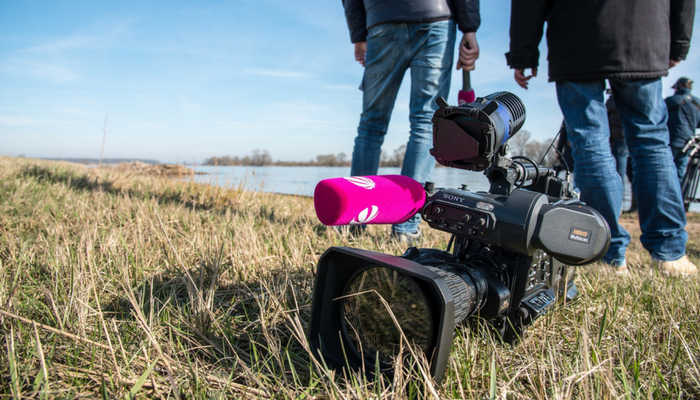How to localize a national media story: What do broadcast reporters really want?

Posted By Celena Fine on February 21, 2018
National stories with a tie-in to your clients are an effective, timely way to secure coverage, but the question is—how do you localize that story and connect it to your clients in a way that will be of interest to local reporters? There are several ways to accomplish this, and the particulars of your client and their news can greatly impact the answer, which, of course, leads to even more questions. As in life, it’s best to take things one step at a time, so in this post we’ll focus on broadcast journalists, but keep in mind that many of these approaches can apply to local papers, business pubs, and more with just some slight tweaks.
Follow Your Formula
Let’s start at the beginning — you’ve come across a story that’s breaking nationally that has some sort of a connection to your client (or better yet, you can tell that the story has only just begun to pick up steam and is only going to get bigger over the next couple of days — meaning you can catch the wave BEFORE it crests). The question now is how to successfully proposition the story and your client to local media in such a way that will garner the most interest possible.
TV news is fairly formulaic. Next time you watch one of your local stations, you’ll notice all the locally based stories have a few things in common: They’re either very visual (i.e. a runaway hot air balloon, a fire, a bad car accident, or a rally with thousands of people attending) or include someone noteworthy from the community — this could be someone of high standing or someone who is notorious (i.e. the mayor, governor, local celebutante, or a notorious criminal). They also could hinge on something that could locally change the status quo in a meaningful way (i.e. a bill, a national chain entering the local market that would provide jobs and access to certain goods/prices, a new rotary that would noticeably cut down on traffic etc…).
Find Your Theme
The key is to find a way to connect your client and the national news story to one of these themes in a way that is appealing to local TV. The best and oftentimes most successful way of doing this is to connect to something visual. In essence, 90% of stories aired on local news need to have a visual aspect to them. This serves to both help tell the story and keep the interest of the viewer. TV stations are always interested in covering something with a good picture. If you can tie your client to the story, and something locally visually that connects with them, you’ll have a good chance of obtaining coverage.
Find Your Star
The second way to secure local coverage with national news is to do this is to attach someone notable to your client. This can be more difficult to achieve, but if accomplished, very successful. Does your client have a good relationship with anyone in the community who is well known and regarded? If a story arises that connects to your client and whoever this individual is, see if they would want to jointly provide comment. Your chances of coverage sky rocket if someone of note is attached to your client.
Find Your Cause
Another tip to securing local coverage from a national news angle is to capitalize on the passions and interests of your clients. If there is a national story with local ramifications that your client has been publically outspoken about (the more outspoken, the better), definitely take advantage of that. Use what your clients are passionate about — whether that be causes or issues directly related to their business when you pitch them. It’s always helpful to be able to showcase a history of advocacy and/or engagement in relation to your client’s passions. This may not be quite as appealing to local broadcast media as the previous options, but if it’s the strongest connection you can make, it’s definitely worth pursuing.
Be Proactive and Connect the Dots
There are also a couple of preemptive ways to tie your clients to a national storyline. It’s always a wise move to connect with someone at local stations if you have anyone who can speak as an expert on a topic. A lot of times assignment planners will file this info away, and pull it up as needed when stories break. Is one of your clients in energy and can speak to global warming or legislation stories as they arise? Or perhaps they’re in tech and can speak with authority on big tech news? Let your local stations know, and when you see a story within your client’s wheelhouse arise — contact them as soon as possible to remind them you have an expert who is willing to speak on the topic. Sometimes reaching out at the right time is really the best way to make headway.
Build and Nurture Relationships
Lastly, always make an effort to build relationships with producers and assignment editors. They receive so many nameless and faceless pitches day in and day out, that it can make a whole world of difference if they recognize your name when you pitch them, and better yet — like you. In fact, if your pitch is as strong as you could make it, but only marginally interesting from their point of view, securing coverage could come down to whether or not you’ve established a relationship with them.
Nothing is a shoe-in with broadcast news, as it all boils down to what’s breaking and how many crews the news team has to work with on any given day, but following these tips will help you build the strongest case for coverage of a national story with a local angle.
Learn more about how Tier One can help you reach broadcast audiences.




